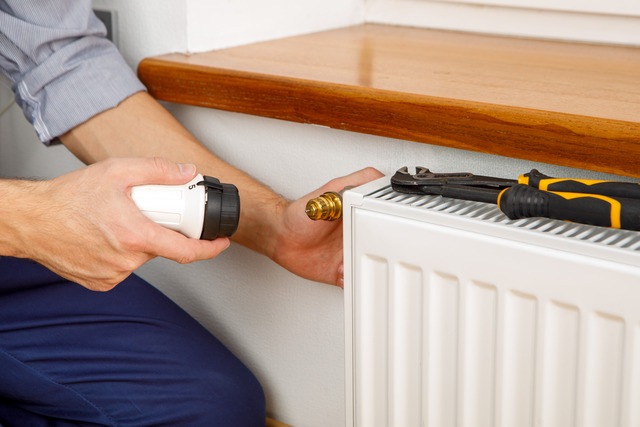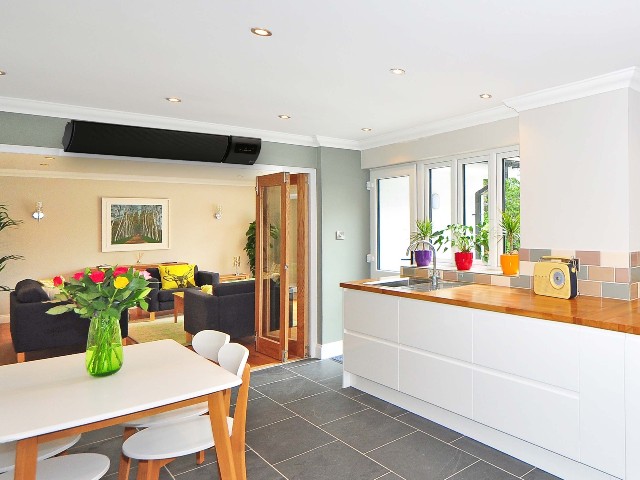Radiator not heating up properly? The potential problems and how to fix them
The problems and solutions that will make sure your radiator is working efficiently so you'll be snuggled up and cosy again before you know it
Radiators not heating up when you need them to is not ideal, especially as the temperature drops and the heating is required.
It’s common to encounter issues with your radiator once the central heating is in full flow again, especially if you’re using it regularly for the first time since for several months.
If you do find an issue though, it’s best to sort it ASAP as we head into the coldest time of year.
Fortunately, most of the things that can go wrong with a radiator don’t always need a professional to fix. But why is the radiator not heating up? Read on for the solutions you need to know…
What are the main causes of a radiator not heating up?
The main causes of a radiator not heating up properly usually come down to:
- Air in the system
- Boiler or heat pump not working properly
- Debris in the filter or pipes
- Air in the system
- Thermostatic radiator valve (TRV) stuck
- Circulation pump not working
- Central heating switched off
- Fuel run out

Photo: Adobe Stock
It sounds obvious, but definitely check that the central heating hasn’t been switched off or put into summer mode.
Or even to just heat the water – it would be a shame to call out a plumber and have to pay a call out fee for something like you could easily check yourself.
Similarly, you could have just run out of fuel.
If you’re using an alternative heat source, like a biomass boiler, you need to make sure you have enough fuel to heat your home.
Once you have checked that your heating system is functioning properly, then it’s time to look at other individual reasons why your radiator isn’t heating up properly.
Jess Thomas, plumbing expert and managing director of Drainage Central gave some advice on helping to solve the most common radiator glitches yourself.
Air in the system
“If you think that there is air in the system of your radiator, alongside any cold spots or gurgling noises, you’ll need to try bleeding the radiator.
“To do this you need a radiator bleed key, or flathead screwdriver, an old towel and a container.
“Before attempting to bleed the radiator, ensure the heating is turned off.
“First of all, locate the valve of the radiator, and use the key or screwdriver to open it, usually by turning it anticlockwise.
“Only open the valve until you hear a hissing noise, as this is caused by the air escaping.
“Once the sound stops, use the container to catch water that comes out of the radiator.
“Use an old towel to catch any excess water ot put it underneath the container to help keep your floor dry.
“After you have caught any water and don’t think anymore will come out, re-tighten the valve.
“Check the pressure of your boiler and while it will decrease slightly after bleeding a radiator, it should have one to one-and-a-half bars of pressure when the heating is off, and two bars when it is on.
“If the pressure is fine, turn the heating back on and check the radiators to see if they are heating up correctly.”

Photo: Adobe Stock
Debris in the filter or pipes
“If radiators are hot at the top but cold at the bottom, there may be debris inside the pipes of the radiator.
“This debris is usually a combination of rust, dirt and corrosion, and will look like a thick sludge.
“To get rid of the debris in the pipes of a radiator, it is best to have the radiator flushed by a professional as it can be complex.
“If you choose to do it yourself, it’s best to first cover your flooring with protective sheets and have a container close by to catch any water.
“The container should be placed beneath where you will be removing the radiator. Before going any further, ensure the heating is turned off and is fully cold.
“The radiator will need to be removed from the system before it can be flushed. Turn off the valves at either side of the radiator, and then bleed the radiator to remove any excess water.
“Disconnect the radiator from the connecting pipes, and check that any lingering water has been removed.
“Take the radiator outside and place at the end of your garden hose onto the inlet valve of the radiator.
“Turn on the water supply of the hose, and flush the radiator out. Continue running water through the radiator until all of the debris is removed and the water is running clear.
“Bring the radiator back inside, and reconnect it to the heating system by doing the reverse of what you did to disconnect it.
“The valves should be returned to their usual positions, and open the bleed valve to allow any excess air to escape.”

Photo: Adobe Stock
Thermostatic radiator valve stuck
“A TRV can become stuck open or closed, and this usually occurs after a long period of it not being used, like during the summer months.
“You can fi it by setting the TRV to the highest setting.
“Then, unscrew the thermostat removal nut, there should then be a piston that pops up beneath this.
“Check that you can push the piston up and down easily.
“If needed, spray a lubricant like WD40 on the piston until it moves smoothly.
“If you are unable to remove the piston, then you will need to replace the TRV.”
Circulation pump not working
“The circulation pump of your heating system may not be working if it’s making strange noises, or the casing feels hot, or you have no hot water, or your radiators aren’t working.
“There can be several reasons why a circulation pump isn’t working.
-
No water running through the system
“If the pump is running but there is no water moving through the system, the pump’s shaft or propeller might be stuck. Lightly tapping the pump might be enough to free any stuck components, but if this doesn’t work or the pump is consistently becoming stuck then it may need to be replaced.”
-
Noisy pump
“If your pump is making strange noises, there might be air trapped inside and this may stop it working. Turn off the electrical supply to the pump and locate the bleed screw. Turn the screw slowly to allow excess air to escape, then tighten the screw and clean up any spilt water before turning the electrical supply back on.”
-
Blocked pump
“If the heating is taking longer to warm up, the circulation pump might be blocked. A pump can become blocked due to a build up of debris in the heating system, and this debris can get stuck in components and stop them from working. If this is the case, you will need to call an engineer to cleanse the system.”
-
Leaking pump
“If there is water leaking from the pump, it may have worked itself loose or have a blown seal. Tighten up any joints, and if the pump is still leaking, check the fittings to see if any parts have corroded, as the whole pump may need to be replaced.”
READ MORE:



